
Tonto Basin is a census-designated place (CDP) in Gila County, Arizona, United States. The population was 1,424 at the 2010 United States Census, up from 840 in 2000.

George Randolph Scott was an American film actor, whose Hollywood career spanned from 1928 to 1962. As a leading man for all but the first three years of his cinematic career, Scott appeared in dramas, comedies, musicals, adventures, war, horror and fantasy films, and Westerns. Out of his more than 100 film appearances, more than 60 of them were Westerns.

Henry Hathaway was an American film director and producer. He is best known as a director of Westerns, especially starring Randolph Scott and John Wayne. He directed Gary Cooper in seven films.

Noah Nicholas Beery was an American actor who appeared in films from 1913 until his death in 1946. He was the older brother of Academy Award-winning actor Wallace Beery as well as the father of prominent character actor Noah Beery Jr. He was billed as either Noah Beery or Noah Beery Sr. depending upon the film.

Jean Rogers was an American actress who starred in serial films in the 1930s and low–budget feature films in the 1940s as a leading lady. She is best remembered for playing Dale Arden in the science-fiction serials Flash Gordon (1936) and Flash Gordon's Trip to Mars (1938).
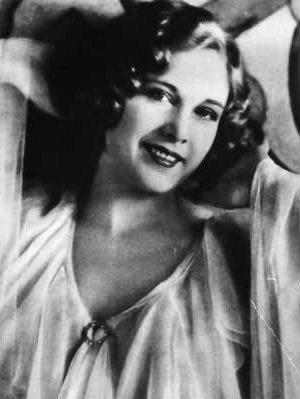
Esther Ralston was an American silent film star. Her most prominent sound picture was To the Last Man in 1933.

Al St. John was an early American motion-picture comedian. He was a nephew of silent film star Roscoe "Fatty" Arbuckle, with whom he often performed on screen. St. John was employed by Mack Sennett and also worked with many other leading players such as Charlie Chaplin, Buster Keaton and Mabel Normand. His film career successfully transitioned from the silent era into sound, and by the late 1930s and 1940s he was working predominantly in Westerns, often portraying the scruffy comedy-relief character "Fuzzy Q. Jones". Among his notable performances in that role are in the "Billy the Kid" series of films released by the Producers Releasing Corporation from 1940 to 1946 and in that company's "Lone Rider" series from 1941 to 1943.

To the Last Man: A Story of the Pleasant Valley War is a 1921 western novel written by Zane Grey.

To the Last Man is a 1923 American silent Western film based on the 1921 novel by Zane Grey, produced by Adolph Zukor and Jesse L. Lasky from Famous Players–Lasky, distributed by Paramount Pictures, directed by Victor Fleming, and starring Richard Dix, Lois Wilson, and Noah Beery. The cinematographer was James Wong Howe.

The Round-Up is a 1920 American silent Western film starring Roscoe "Fatty" Arbuckle and featuring Wallace Beery. The movie was written by Edmund Day and Tom Forman, directed by George Melford, and based on Day's play that was a huge hit for Roscoe Arbuckle's older cousin Macklyn Arbuckle and Julia Dean on the Broadway stage in 1907. It was Macklyn in the play who created the famous phrase used in advertisements of the film, nobody loves a fat man.
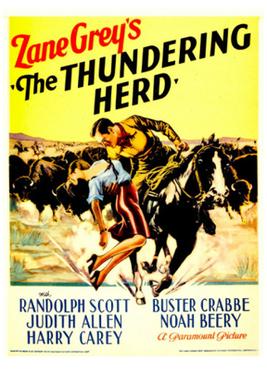
The Thundering Herd is a 1933 American pre-Code Western film directed by Henry Hathaway and starring Randolph Scott, Judith Allen, Buster Crabbe, Noah Beery, Sr. and Harry Carey.
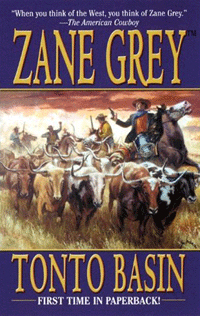
For the geographical place see Tonto Basin
Whip Wilson was an American cowboy film star of the late 1940s and into the 1950s, known for his roles in B-Westerns.
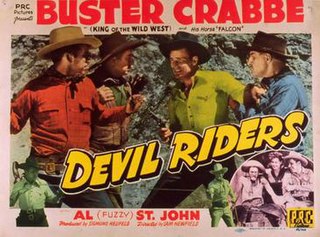
Devil Riders is a 1943 American Western film directed by Sam Newfield. It was the first film in Producers Releasing Corporation's Billy the Kid film series where Crabbe changed his name to "Billy Carson".

Man of the Forest is a 1933 American pre-Code Western film directed by Henry Hathaway, based upon a novel by Zane Grey, released by Paramount Pictures, and starring Randolph Scott and Verna Hillie. The supporting cast features Harry Carey, Noah Beery Sr., Barton MacLane, Buster Crabbe and Guinn "Big Boy" Williams. The film is also known as Challenge of the Frontier.

She Had to Choose is a 1934 American romantic comedy crime drama film directed by Ralph Ceder and starring Buster Crabbe, Isabel Jewell and Sally Blane. Distributed by Majestic Pictures, it is set in California during The Depression.
Western Cyclone is a 1943 American Producers Releasing Corporation Western film of the "Billy the Kid" series directed by Sam Newfield. The film is also known as Frontier Fighters.
Budd Leland Buster, was an American actor known for B western films. He was sometimes credited as Bud Buster, and as George Selk in his later work.

Wanderer of the Wasteland is a 1935 American Western film directed by Otho Lovering and written by Stuart Anthony. It is based on the 1923 novel Wanderer of the Wasteland by Zane Grey. The film stars Dean Jagger, Gail Patrick, Edward Ellis, Monte Blue, Buster Crabbe and Trixie Friganza. The film was released on September 9, 1935, by Paramount Pictures.
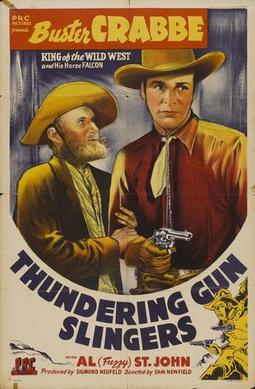
Thundering Gun Slingers is a 1944 American Western film directed by Sam Newfield and written by Fred Myton. The film stars Buster Crabbe, Al St. John, Frances Gladwin, Charles King, Jack Ingram and Karl Hackett. The film was released on March 25, 1944, by Producers Releasing Corporation.

















